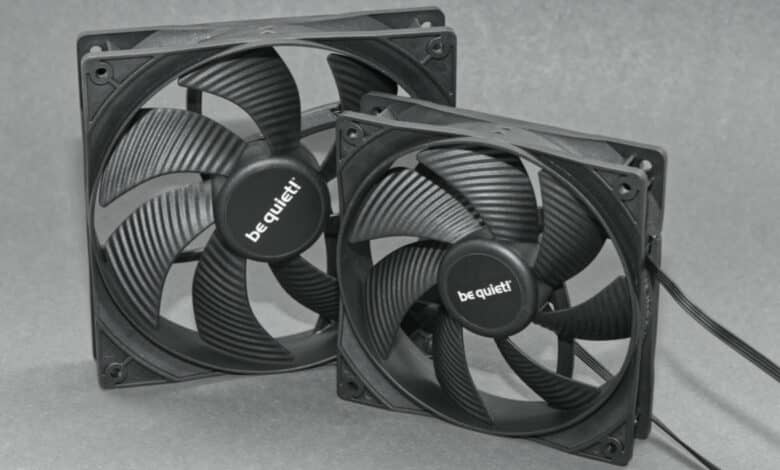
The be quiet! Pure Wings 2 have been a popular fan standard in the affordable range for a long time, around 10 years. However, the development of fans has not stood still and so these fans have also shown their age in the major fan tests. But the announcement of the be quiet! Pure Wings 3 came as no surprise, as they had already been seen in the Shadow Base 800 or as a high-speed variant on the Pure Loop 2 water cooler. In the be quiet! Pure Wings 3 test, we now take a look at the 120 and 140 mm versions of the fresh fans and compare them to their predecessors to see what the new edition can do in different areas of application!
Specifications
120 mm PWM
| Size | 120 x 120 x 25 mm |
| Speed | max. 1600 RPM |
| Noise level | 25.5 dB(A) |
| Air flow | 84.8 m³/h |
| Static pressure | 1.45 mmH2O |
| Connection | PWM |
| Expected operating time | 80.000 hours (corresponds to approx. 9 years of continuous operation) |
| Warranty period | 3 years |
| Price | € 14.40 * |
140 mm PWM
| Size | 140 x 140 x 25 mm |
| Speed | max. 1200 RPM |
| Noise level | 21.9 dB(A) |
| Air flow | 97.5 m³/h |
| Static pressure | 0.96 mmH2O |
| Connection | PWM |
| Expected operating time | 80.000 hours (corresponds to approx. 9 years of continuous operation) |
| Warranty period | 3 years |
| Price | € 15.66 * |
A note at this point: In this generation, only fans of sizes 120 and 140 mm have been announced so far. The be quiet! Pure Wings 2 are also available in 80 and 92 mm sizes – particularly relevant for older computers, pre-built workstations and small form factor computers (SFF / Micro-ITX). At the moment, the small fans will remain on sale and will not (yet?) be replaced.
There are also high-speed versions of the be quiet! Pure Wings 3 with a higher speed and significantly higher static pressure. However, this test is about the quieter standard versions.
Packaging and scope of delivery
- Simple, unpadded packaging
- Clear design
- The only accessories are case fan screws
As far as the packaging is concerned, be quiet! has remained true to itself. Stylistically, not much has changed here – the box is black and clearly designed with the product imprint and the product name on the front. The back shows the specifications and a brief introduction to the brand in English. The “Developed in Germany” logo is new.
Otherwise, the box in which the be quiet! Pure Wings 3 are delivered is completely unpadded. In this price range, you wouldn’t expect a special scope of delivery, so it’s not surprising that you only find a set of black case fan screws next to the fan.
Design in comparison
- Logo now white instead of orange
- Typical wave design of the fan blades
The most striking change in the be quiet! Pure Wings 3 compared to the previous models is the manufacturer’s logo. On the older version, this was still in the eye-catching be quiet! brand color orange on the fan. The new version shows the logo in white, so that it is inconspicuous or can reflect the light color in illuminated systems.
Otherwise, the fans are quickly recognizable as a typical be-quiet! model, as the fan blades have a distinctive wave design. However, there are changes to the fan blades: Where the Pure Wings 2 had nine fan blades, the Pure Wings 3 come with seven fan blades, which are wider to compensate. The high-speed version, which I won’t be taking a closer look at in the be quiet! Pure Wings 3 test, still has nine fan blades.
Overall, the be quiet! Pure Wings 3 look more serious than the previous models. Sure – they don’t come close to the build quality of the significantly more expensive be quiet! Silent Wings 4, but at least at first glance the difference isn’t quite as noticeable.
The fact that the fan screws supplied with the be quiet! Pure Wings 3 are black may be relevant, whereas those of the predecessors had the classic chrome sheen that often no longer matches modern housings.
Build quality
- More robust frame compared to the predecessor model
- Thin, inconspicuous black cable
While we’re on the subject of the fan blades, I also took a caliper gauge. Where the distance between the fan blades and the frame of the be quiet! Pure Wings 2 120mm PWM was a good 2 mm, I measured around 1.5 mm for the Pure Wings 3 120mm PWM. This also means that the torsional rigidity is significantly better in the be quiet! Pure Wings 3 test. Despite the larger gap, it is no problem to touch the fan blades of the Pure Wings 2 by pressing on the frame and thus stop the rotation. Nothing happens here with the new fans. A clear improvement! I didn’t notice any change in the 140 mm version. Here, the distance between the fan blade and the frame was approx. 2 mm for both generations.
What hasn’t changed are the corners – these are still without rubber pads on the brand’s entry-level series. The cable of the be quiet! Pure Wings 3 is also black and thin. This makes it easy and inconspicuous to lay, but it can be more sensitive to sharp edges than cables with sheathing.
Internal improvements are noticeable. Where the speed measurement on the Pure Wings 2 quickly jumps by 10-30 RPM, the measurement on the successors remains constant. Whether this is just a better speed sensor or the fans actually run more consistently is not clear.
Volume and performance
- Tests in three scenarios: As a case fan, radiator fan and on air coolers
- An improvement can be expected, particularly in terms of performance on the radiator
When you turn the fans on in your hand, you immediately notice that the be quiet! Pure Wings 3 run more quietly than their predecessors. This is also confirmed in practical use. A motor noise is perceptible with the Pure Wings 2. Quiet, but present. With the be quiet! Pure Wings 3, nothing is noticeable. But let’s move on to the actual test. Here we test the fans in three typical areas: on the radiator, as a case fan and the 120 mm version also on the air cooler.
In particular, be quiet! has tackled the performance on the radiator with the new version. This is also quickly noticeable visually. Where the areas between the fans and at the corners were still open on the be quiet! Pure Wings 2, these areas are sealed on the be quiet! Pure Wings 3. This reduces the risk that the fresh air drawn in by the fans can escape without being forced through the radiator. The enlarged fan blades give hope for a higher static pressure. A quick look at the specifications: In fact, the airflow of the be quiet! Pure Wings 3 in both the 120 and 140 mm versions is at a very similar level compared to its predecessors, but the static pressure has increased noticeably in both cases. But is this also reflected in the practical performance?
be quiet! Pure Wings 3 test as a case fan
- This is what the regular be quiet! Pure Wings 3 are optimized for
- Explanation of the test setup
The regular version of the be quiet! Pure Wings 3 is particularly suitable for use as a case fan, whereas the high-speed version may be more suitable for other applications. However, we will test all three options.
The measurement result is given as the difference between the room temperature and the measured temperature. In this way, the effect of fluctuating room temperatures is compensated for. If the result is given as 34 K, the room temperature, for example 22°C, must be added in order to arrive at the actual measured temperature. CPU stands for the processor and GPU for the graphics card.
An AMD Ryzen 5 3600 X with a 120 mm tower cooler is used as the case fan in the be quiet! Pure Wings 3 test. The case is a Fractal Design Pop XL Air, with one fan at the bottom front and one at the top rear. All fans on the tower cooler and the graphics card are set to a fixed speed so that they do not influence the result through automation.
A custom run of 3DMark Fire Strike is used for the load. After 10 minutes of load, the average temperature of the processor and graphics card is measured for one minute.
Measurement results and analysis as a case fan
- All-round improved performance compared to predecessors
- New fans are also a little louder due to the higher speed
| Fans and settings | CPU & GPU temperature delta | Volume and speed |
| be quiet! Pure Wings 3 120mm @ 50% PWM |
CPU 34.3 K & GPU 31.7 K | 31 dB(A) @ 900 RPM |
| be quiet! Pure Wings 3 120mm @ 100% PWM |
CPU 32 K & GPU 28.1 K | 38.9 dB(A) @ 1550 RPM |
| be quiet! Pure Wings 2 120mm @ 50% PWM |
CPU 34.4 K & GPU 34.2 K | 31.6 dB(A) @ 750 RPM |
| be quiet! Pure Wings 2 120mm @ 100% PWM |
CPU 32.4 K & GPU 31.3 K | 38.4 dB(A) @ 1360 RPM |
| be quiet! Pure Wings 3 140mm @ 50% PWM |
CPU 34 K & GPU 32.2 K | 31 dB(A) @ 680 RPM |
| be quiet! Pure Wings 3 140mm @ 100% PWM |
CPU 31.6 K & GPU 29.6 K | 39.3 dB(A) @ 1210 RPM |
| be quiet! Pure Wings 2 140mm @ 50% PWM |
CPU 36 K & GPU 35 K | 31.6 dB(A) @ 460 RPM |
| be quiet! Pure Wings 2 140mm @ 100% PWM |
CPU 32.3 K & GPU 30.6 K | 37.9 dB(A) @ 910 RPM |
In any case, it is interesting to see that the 120 mm version has a slight advantage over the 140 mm version in both generations. Admittedly, this was unexpected. In terms of performance, the 120 mm fans are therefore preferable. However, the be quiet! Pure Wings 3 140mm PWM in particular benefit significantly from the higher speed, whereas the speed of the 120 mm fans has also increased, but to a lesser extent. But here too, the increase in performance is very noticeable. As far as the noise level is concerned, no real differences can be detected. The be quiet! Pure Wings 3 140mm PWM are also slightly louder due to the higher maximum speed, but in the low speed range the newer fans benefit from the improved smoothness of the motor.
Test of the be quiet! Pure Wings 3 120mm on the air cooler
- Noticeable improvement in performance compared to the older fans
- No increase in volume due to the higher speed was measurable here
For the be quiet! Pure Wings 3 test of the 120 mm fans on the air cooler, the DeepCool AK400 is used on the AMD Ryzen 5 3600X. The case is still the Fractal Design Pop XL Air and two be quiet! Pure Wings 3 140mm fans are used as case fans. One each at the front and rear and set to 50% PWM. Cinebench R23 ensures a constant load, with the Ryzen 5 3600X drawing around 85 watts.
| Fan and settings | CPU temperature delta | Volume and speed |
| be quiet! Pure Wings 3 120mm @ 50% PWM |
58,4 K | 31.2 dB(A) @ 880 RPM |
| be quiet! Pure Wings 3 120mm @ 100% PWM |
52,2 K | 33.4 dB(A) @ 1515 RPM |
| be quiet! Pure Wings 2 120mm @ 50% PWM |
60,3 K | 31.2 dB(A) @ 770 RPM |
| be quiet! Pure Wings 2 120mm @ 100% PWM |
53,5 K | 34 dB(A) @ 1440 RPM |
The volume “31.2 dB(A)” means that the fans cannot be distinguished from the regular noise development of the system. Apart from that, it is easy to see that the be quiet! Pure Wings 3 are completely superior to their predecessors. This may primarily be due to the higher speed, but this is achieved without the noise level suffering – on the contrary! So if you are looking for a replacement fan for your air cooler, the be quiet! Pure Wings 3 120mm PWM is a good choice.
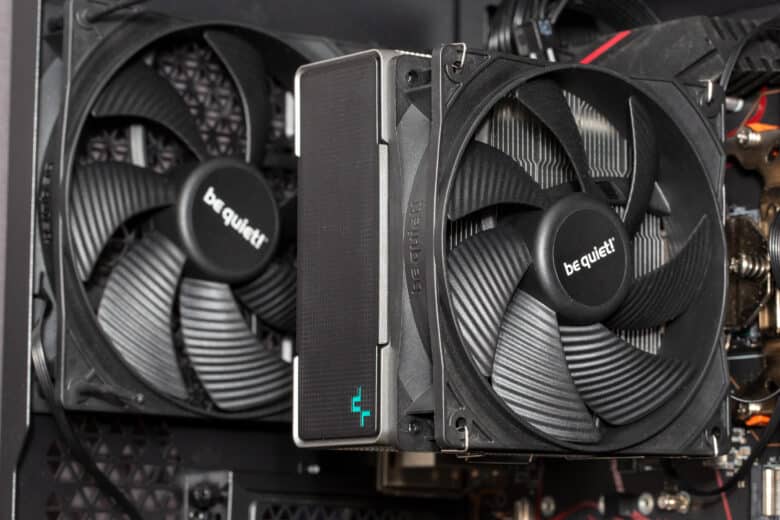
be quiet! Pure Wings 3 test on the radiator
- be quiet! Pure Wings 3 are more powerful than their predecessors
- The difference in the 120 mm fans is greater
- The high-speed version not tested here is better suited for radiator use
A note in advance: The 120 mm fans and the 140 mm fans cannot be directly compared in this test, as is the case when using them as case fans. This is because another aspect comes into play here: the radiator surface area is different. But it is enough to measure the be quiet! Pure Wings 3 against the performance of the previous generation. An Intel i5-9600K overclocked to 4.7 GHz is used here, which draws around 115 watts under Cinebench load. The Arctic Liquid Freezer II 240 and 280 are used as AIOs. These are widely used and expose the fans to a higher resistance with the particularly high thickness of 38 mm instead of the usual 30 mm for AIOs.
| Fans and settings | CPU temperature delta | Volume and speed |
| be quiet! Pure Wings 3 120mm @ 50% PWM |
48 K | 30 dB(A) @ 900 RPM |
| be quiet! Pure Wings 3 120mm @ 100% PWM |
44 K | 37 dB(A) @ 1570 RPM |
| be quiet! Pure Wings 2 120mm @ 50% PWM |
51 K | 30 dB(A) @ 780 RPM |
| be quiet! Pure Wings 2 120mm @ 100% PWM |
45 K | 36 dB(A) @ 1450 RPM |
| be quiet! Pure Wings 3 140mm @ 50% PWM |
43 K | 30 dB(A) @ 680 RPM |
| be quiet! Pure Wings 3 140mm @ 100% PWM |
39 K | 35 dB(A) @ 1210 RPM |
| be quiet! Pure Wings 2 140mm @ 50% PWM |
43 K | 30 dB(A) @ 580 RPM |
| be quiet! Pure Wings 2 140mm @ 100% PWM |
40 K | 34 dB(A) @ 900 RPM |
30 dB(A) means that the fans are virtually inaudible. In this test, the measurement of the faster be quiet! Silent Wings 3 is slightly louder at maximum performance. The advantages of the new 140 models on the radiator are limited. The difference with the be quiet! Pure Wings 3 120mm PWM, on the other hand, is greater. Especially at lower speeds, these fans are more efficient and deliver acceptable performance at low noise levels. Overall, the high-speed version of the Pure Wings 3 not tested here will be the better choice for radiators in both sizes.
Conclusion
The be quiet! Pure Wings 3 prove to be an all-round improvement of the popular fan series in the test. The 120 mm version increases performance considerably while maintaining the same volume. And the 140 mm version has been accelerated overall, which leads to a higher noise level, but to a significant increase in performance when used as a case fan. This popular fan series has also been improved in virtually all other respects! The workmanship is more solid, the running smoothness and precision have been improved and the design is less conspicuous in terms of color. However, the price has also gone up slightly, which is not yet so relevant for individual fans or the expansion of existing models, but will still be noticeable when a system is fully equipped. We can only hope that the first price will fall a little over time after the release.
Overall, however, the be quiet! Pure Wings 3 are definitely good fans that you can’t really go wrong with.
be quiet! Pure Wings 3
Workmanship
Noise level
Performance
Value for money
81/100
The be quiet! Pure Wings 3 are an all-round upgrade of the popular mainstream brand fans. However, they are also somewhat more expensive.


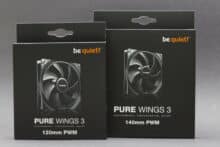
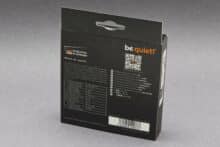


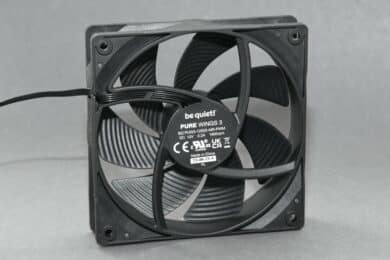

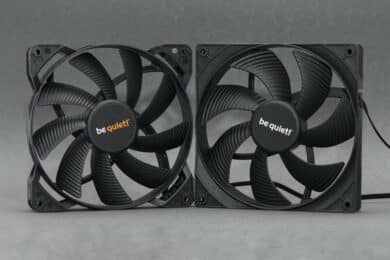



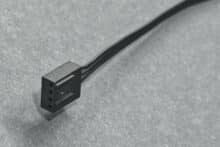


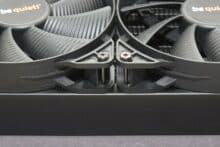
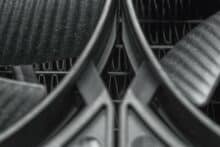
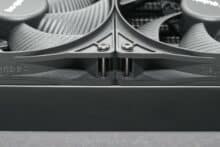

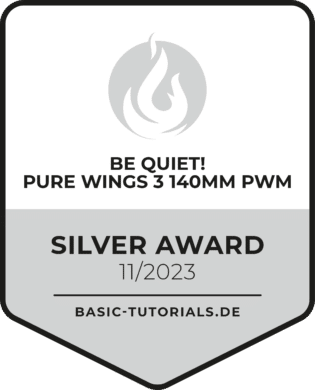
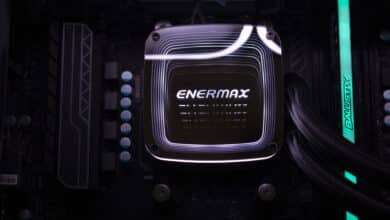

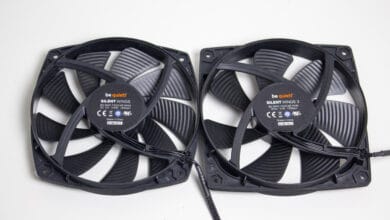
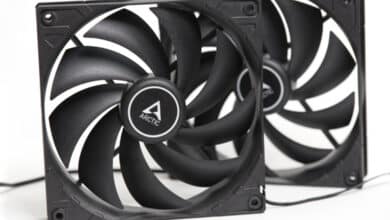
No replies yet
Neue Antworten laden...
Gehört zum Inventar
Beteilige dich an der Diskussion in der Basic Tutorials Community →